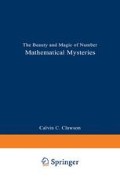Abstract
Sometimes the most innocent question inspires the greatest effort in mathematics. Christian Goldbach (1690–1764) asked just such a question in 1742. Goldbach was a German mathematician who became professor of mathematics in 1725 in St. Petersburg, Russia. Three years later he traveled to Moscow to tutor Tsar Peter II. Goldbach traveled about Europe during his career and met a number of talented mathematicians, among them Leonhard Euler. Along with Goldbach, Euler became a member of the Russian Academy of Sciences. Both men had a love for infinite series and prime numbers. In a letter to Euler on June 7, 1742, Goldbach speculated that every even number is the sum of two primes, and every odd number larger than 2 is the sum of three primes.2
The principal dif:ficulty in the mathematics is the length of inferences and compass of thought requisite to the forming of any conclusion.
David Hume (1711–1776)
An Enquiry Concerning Human Understanding1
Access this chapter
Tax calculation will be finalised at checkout
Purchases are for personal use only
Preview
Unable to display preview. Download preview PDF.
End Notes
David Hume, An Enquiry Concerning Human Understanding (CD: DeskTop BookShop) (Indianapolis: WeMake CDs, Inc., 1994).
Internet: sci.math, Kent D. Boklan, July 21, 1994.
Paulo Ribenboim, The Book of Prime Number Records, p. 230.
Internet: sci.math, Boklan, July 21, 1994.
Paulo Ribenboim, The Book of Prime Number Records, p. 230.
Internet: sci.math, Chris Thompson, August 5, 1994.
Henry F. Fliegel and Douglas S. Robertson, “Goldbach’s Comet: The Numbers Related to Goldbach’s Conjecture,” Journal of Recreational Mathematics, Vol. 21, No. 1, 1989, 1–7.
G.H. Hardy and E.M. Wright, An Introduction to the Theory of Numbers (Oxford, England: Clarendon Press, 1979), p. 358.
Robert Kanigel, The Man Who Knew Infinity, p. 135.
Information of g(n) taken from Paulo Ribenboim, The Book of Prime Number Records, pp. 240–245.
Rights and permissions
Copyright information
© 1996 Calvin C. Clawson
About this chapter
Cite this chapter
Clawson, C.C. (1996). Goldbach’s Conjecture. In: Mathematical Mysteries. Springer, Boston, MA. https://doi.org/10.1007/978-1-4899-6080-1_13
Download citation
DOI: https://doi.org/10.1007/978-1-4899-6080-1_13
Publisher Name: Springer, Boston, MA
Print ISBN: 978-0-306-45404-2
Online ISBN: 978-1-4899-6080-1
eBook Packages: Springer Book Archive

